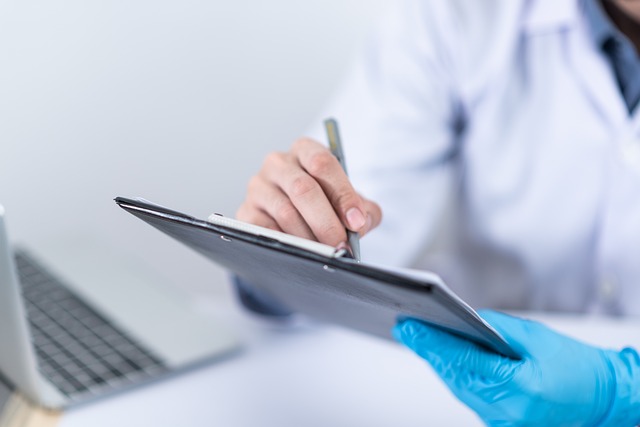3D Bioprinting – The Future of Personalized Organ Replacement
The human body is an intricate machine, and when a vital organ malfunctions, the need for a replacement can be a matter of life and death. For decades, organ transplantation has offered a lifeline to those suffering from organ failure. However, the scarcity of donor organs creates a constant struggle, with waitlists stretching for years and many patients succumbing to their illness before a compatible match is found.
Now, a revolutionary technology holds the potential to rewrite this narrative: 3D bioprinting. Imagine a future where doctors can “print” customized organs, perfectly suited to each patient’s needs. This isn’t science fiction; 3D bioprinting research is rapidly advancing, offering a glimmer of hope for millions awaiting a transplant.
The Art of Bioprinting: Building with Living Cells
Unlike traditional 3D printing that uses plastic or metal filaments, bioprinting employs a special “ink” called bioink. This bioink is a complex concoction that can contain living cells, biocompatible materials that mimic natural tissues, and growth factors that help the cells mature and organize. The bioprinter then meticulously deposits the bioink layer by layer, following a digital blueprint of the desired organ.

Just like an architect uses blueprints to construct a building, bioprinting utilizes medical scans and computer-aided design (CAD) software to create a precise 3D model of the organ. This model factors in the patient’s specific anatomy, ensuring a perfect fit.
From Ink to Organ: The Journey of Bioprinted Tissues
The magic of bioprinting lies in its ability to mimic the natural growth process of organs. Once printed, the cells within the bioink scaffold begin to interact and organize themselves, mimicking the structure and function of the target organ. Over time, under carefully controlled conditions, these bioprinted tissues mature, potentially becoming viable for transplantation.
The Benefits of Bioprinted Organs
The potential benefits of bioprinting organs are vast:
- Reduced Wait Times: With the ability to create custom-made organs, bioprinting could significantly reduce wait times for transplants. Patients wouldn’t have to rely on the availability of a deceased donor match, potentially saving countless lives.
- Eliminating Rejection: A major hurdle in traditional organ transplantation is the risk of organ rejection – the body’s immune system attacking the foreign organ. Bioprinting offers the possibility of using the patient’s own cells, significantly reducing the chances of rejection.
- Personalized Medicine: Bioprinting can be tailored to individual needs. By incorporating a patient’s specific cells, doctors could create organs with a minimized risk of rejection and a higher chance of long-term success.
- Reduced Reliance on Medication: Bioprinted organs that seamlessly integrate with the recipient’s body could potentially reduce the need for lifelong immunosuppressive drugs, which have various side effects.
Challenges and Considerations
While the promise of bioprinting is undeniable, there are still significant challenges to overcome before it becomes a widespread medical reality.
- Bioink Development: Researchers are continuously refining bioink formulations to ensure optimal cell viability, growth, and functionality. Creating bioinks that perfectly mimic the intricate structures and functions of different organs remains an ongoing quest.
- Vascularization: The successful integration of a bioprinted organ requires a network of blood vessels to deliver oxygen and nutrients to the cells. Bioprinting these intricate vascular networks is a significant hurdle that researchers are actively addressing.
- Maturity and Functionality: Bioprinted organs still need to achieve the full maturity and functionality of their natural counterparts. Extensive research is needed to ensure bioprinted organs can perform all the necessary tasks for long-term survival.
Ethical Considerations
The potential of bioprinting raises several ethical considerations. Issues such as accessibility, affordability, and the potential for commercialization need careful discussion and regulations to ensure equitable access to this life-saving technology.
The Road Ahead: A Future Filled with Hope
Despite the challenges, the field of 3D bioprinting is progressing rapidly. While it may take several years before bioprinted organs become a routine medical procedure, ongoing research offers immense hope for the future of organ transplantation. The potential to eliminate organ wait times, reduce rejection risks, and provide personalized medicine solutions is truly transformative.
As research continues to unlock the secrets of bioprinting, we inch closer to a future where printing a healthy, life-saving organ becomes a reality. With continued advancements, 3D bioprinting has the potential to revolutionize medicine, offering a brighter and healthier future for millions.
Reference
National Centre for Biotechnology Information: Three-Dimensional Bioprinting of Human Organs and Tissues: Bioethical and Medico-Legal Implications Examined through a Scoping Review: https://www.ncbi.nlm.nih.gov/pmc/articles/PMC10525297/
You are so cool! I do not believe I’ve truly read through anything
like that before. So nice to find somebody with unique thoughts on this subject.
Really.. many thanks for starting this up. This site is one thing that
is needed on the web, someone with a bit of originality!
Fascinating blog! Is your theme custom made or did you download it from somewhere?
A design like yours with a few simple tweeks would really make my blog stand out.
Please let me know where you got your design.
Thank you
you’re welcome.I used Silk Newspaper and made some PHP code changes to improve the loading speed